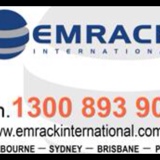Information
-
Mezzanine Store Audit. Conducted on behalf of Emrack International.
-
Document No.
-
Client / Site
-
Conducted on
-
Prepared by
-
Location
Overview of Mezzanine Structure and Condition
Background , Damage Classification and Risk Management
-
Pallet racking should be set-up, operated and maintained according to the instructions of the racking manufacturer and be in accordance with AS 4084: 2012 - Steel Storage Racking. It should be designed specifically for the size, shape and weight of the products being used.
This audit has been conducted in accordance with AS 4084-2012 section 8 , sub section 8.2 to 8.5.4 . -
As per AS 4084-2012- 8.5. Any damage to racking members will fall under various classification and must be reported to theses levels.
Please note classifications below, recommendation on attached audit will reflect the below.
8.5 DAMAGE CLASSIFICATION AND RISK MANAGEMENT
8.5.1 General The assessment applies only to damage that produces an overall bend in a member in accordance with Clause 8.3.2 to 8.3.4. These limits do not apply to highly localized damage such as dents, buckles, tears and splits. Members subjected to tears and splits shall be replaced.
8.5.2 Acceptable damage (Green)
When the level of damage does not exceed the permissible limits specified in Clauses 8.3.2 to 8.3.4, the racking shall be considered serviceable and does not require either unit load reduction or immediate unloading. This constitutes green level damage. There shall be a method of recording damage to components. There shall also be a method, such as the use of stick-on tags on the components, to show that these components have been inspected and that the racking is suitable for further service until the next inspection, when the components have been re-inspected and re-assessed (Section 8.2). For example, use could be made of coloured dated adhesive labels, which indicate that racking or components are suitable for service and need to be re-inspected at future inspections. Exceeding the green level shall be considered hazardous or very serious damage and causes risk to the racking system.
8.5.3 Hazardous damage (Amber risk)
When the level of damage exceeds the permissible limits specified in Clauses 8.3.2 to 8.3.4 by up to a factor of 2, the damage section shall be clearly marked and isolated until remedial work has been carried out before the racking can be reloaded. If remedial work cannot be carried out within four weeks, the level of damage shall be redesignated as ‘very serious damage’ (red risk). There shall be a method of isolating such racking to ensure that it will not come back into use until the necessary repairs have been carried out and the equipment certified as safe. For example, dated coloured adhesive labels could be used to indicate that the racking is not to be reloaded until rectified.
8.5.4 Very serious damage (Red risk)
When the level of damage is in excess of the permissible limits specified in Clauses 8.3.2 to 8.3.4 by more than a factor of 2, the damage section and appropriate adjacent section(s) shall be immediately unloaded and isolated from further use until remedial work has been carried out and certified as safe. There shall be a method of isolating areas of racking to ensure that they do not come back into use prior to the repair work being carried out. For example, a particular bay could be immediately off-loaded and roped off to prevent further use. Any repair works shall be in consultation with the racking supplier or a qualified structural engineer. NOTE: Remedial work usually involves replacement
Certification / Inspection Details
-
Has the racking had its annual check for integrity as per requirements in AS 4084-1202/ 8.2.?
-
When was the check last completed?
-
Select date
Current site layout.
-
Is a current site plan available?
-
Add media
-
Draw current racking layout if not available.
Working Load Limits
-
Are rack load limit signs displayed as required as per AS4084-2012/ 8.1.2
-
Are Operating instructions present and displayed in more then one location as required per AS4084-2012/ 8.1.4
-
Add media
Beams
-
Are the beams overloaded?
-
Are the beam welds damaged?
-
Are beam connectors or safety clips missing?
-
Add media
Uprights and Footplates
-
Are uprights damaged?
-
Is there diagonal bracing to uprights?
-
Add media
Out of Plumb
-
Is the racking vertical?
-
Add media
Braces
-
Are racking braces damaged?<br><br>For bracing - the member deviation from a 1m long straight edge in either plane should not exceed 10mm
-
Add media
Floor Fixings
-
Are floor fixings installed?
-
Are all footings to uprights correctly bolted to the slab/mazanine.
-
Add media
Further Questions
-
Can the existing mezzanine be brought back to "as built "condition?
-
Does the rectification works require an engineer input.?<br>( below box) comments on the reason for engineer imput , 1 or 2 key comments only.
-
Ground floor safety consurns other then structural?<br>below box) comments on the reason for safety , 1 or 2 key comments only.
-
upper level safety consurns other then structural?<br>below box) comments on the reason for upper level safety consurns , 1 or 2 key comments only.
-
Upper level racking suitable for use?
-
Can mezzanine Kpa be increased ?
-
Are there any key items to take into account if mezzanine is to be removed.<br>Comments?
Estimated Cost- "As New rectification"
-
Indicative Cost of the scope of works to bring the structure back to " As Built Condition"
-
Add media
Estimated Cost - "Safety Items needing immediate rectification"
-
Indicative cost of works to complete safety items identified.
-
Add media
Audit completed on and by............
-
Add drawing
-
Matthew Coghill
-
Select date






